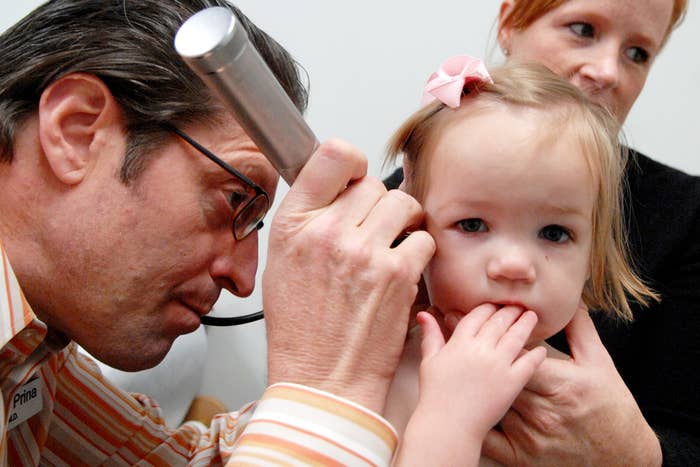
Amoxicillin, an antibiotic commonly used to treat a variety of bacterial infections, particularly in children, is in short supply nationwide as demand for the drug increases.
The FDA placed the medication on its drug shortages list last month, but parents and caregivers are starting to feel the impact, asking for advice on social media over concerns their children may not get the treatment they need. Some are seeking alternatives to help with bronchitis, ear infections, and strep throat, among other illnesses.
Sometimes known as the “pink stuff” because one version is a bubblegum-flavored liquid, amoxicillin is a household staple for some families. It’s usually the drug of choice for ear infections and other common problems in children.
The shortage, which is only affecting the liquid form of the drug, is expected to last several months, according to the American Academy of Pediatrics. Amoxicillin also comes in chewable tablet, capsule, and tablet form.
"Multiple pharmacies in my area are out of amoxicillin suspension but we can sometimes find it at other locations/chains," Dr. Jennifer Shu, a pediatrician in Atlanta, told BuzzFeed News in an email. "I have been practicing over 25 years and although I recall one or two brief shortages, I have not seen anything to this extent or duration."
Amoxicillin works by killing bacteria and preventing their growth, which means it does not work for colds, flu, or other viral infections such as respiratory syncytial virus (RSV). (Although doctors sometimes prescribe it for secondary bacterial infections that can occur after a viral infection.) It can be used to treat both children and adults.
“The FDA recognizes the potential impact any drug shortage may have on health care providers and patients,” the FDA told BuzzFeed News in an email. “While the agency does not manufacture drugs and cannot require a pharmaceutical company to make a drug, make more of a drug, or change the distribution of a drug, the public should rest assured the FDA works closely with manufacturers to prevent or reduce the impact of shortages.”
Non-COVID respiratory viruses are making a comeback as many people ditch their face masks and resume normal activities. As a result, the US is experiencing the highest hospitalization rates for influenza in a decade; the CDC estimates that there have been at least 6.2 million infections, 53,000 hospital admissions, and 2,900 deaths (including 12 kids) from flu so far.
Doctors are also reporting alarming spikes in RSV in children much earlier than usual. Meanwhile, COVID cases are steadily increasing and are expected to continue that trend following large Thanksgiving gatherings and the rest of the holiday season.
What can doctors and parents do amid the amoxicillin shortage?
The good news is that there are alternatives for people who are prescribed the liquid form of amoxicillin.
The AAP first recommends that pediatricians ensure their patients need antibiotics before prescribing them, given that many infections in children are caused by viruses, not bacteria.
Giving antibiotics to people who don’t really need them can lead to antibiotic resistance: when germs develop the ability to defeat the drugs made to kill them. CDC data released in 2016 showed that at least 30% of antibiotics prescribed in the US are unnecessary, putting patients at risk of allergic reactions and deadly diarrhea in rare cases.
"Talk to your child’s pediatrician if your child is sick, and only give antibiotics if they are definitely indicated," Shu said.
Doctors may recommend “watchful waiting” for some infections, particularly in older children with mild symptoms; research suggests that using pain relievers and monitoring children for two to three days before prescribing antibiotics can result in some bacterial ailments, like ear infections, resolving on their own.
Pediatricians who cannot find liquid amoxicillin for their patients who need them should instead prescribe the other forms of the medication, such as tablets, capsules, or chew tabs, the AAP says.
“Tablets can be split/crushed, and capsules can be opened,” the AAP says. “Both can be mixed with any liquid or semisolid like applesauce and given orally or by tube. Chew tabs also can be split.”
In the event amoxicillin cannot be used to treat ear infections, sinusitis, pneumonia, strep throat, and other illnesses, other medications can be prescribed, including amoxicillin/clavulanate, a ceftriaxone injection, penicillin VK, and cephalexin.
The FDA has also released guidance for licensed pharmacists on how to compound amoxicillin to alleviate shortages. This means pharmacists are able to mix, combine, or alter ingredients to create a similar medication that requires less amoxicillin.
